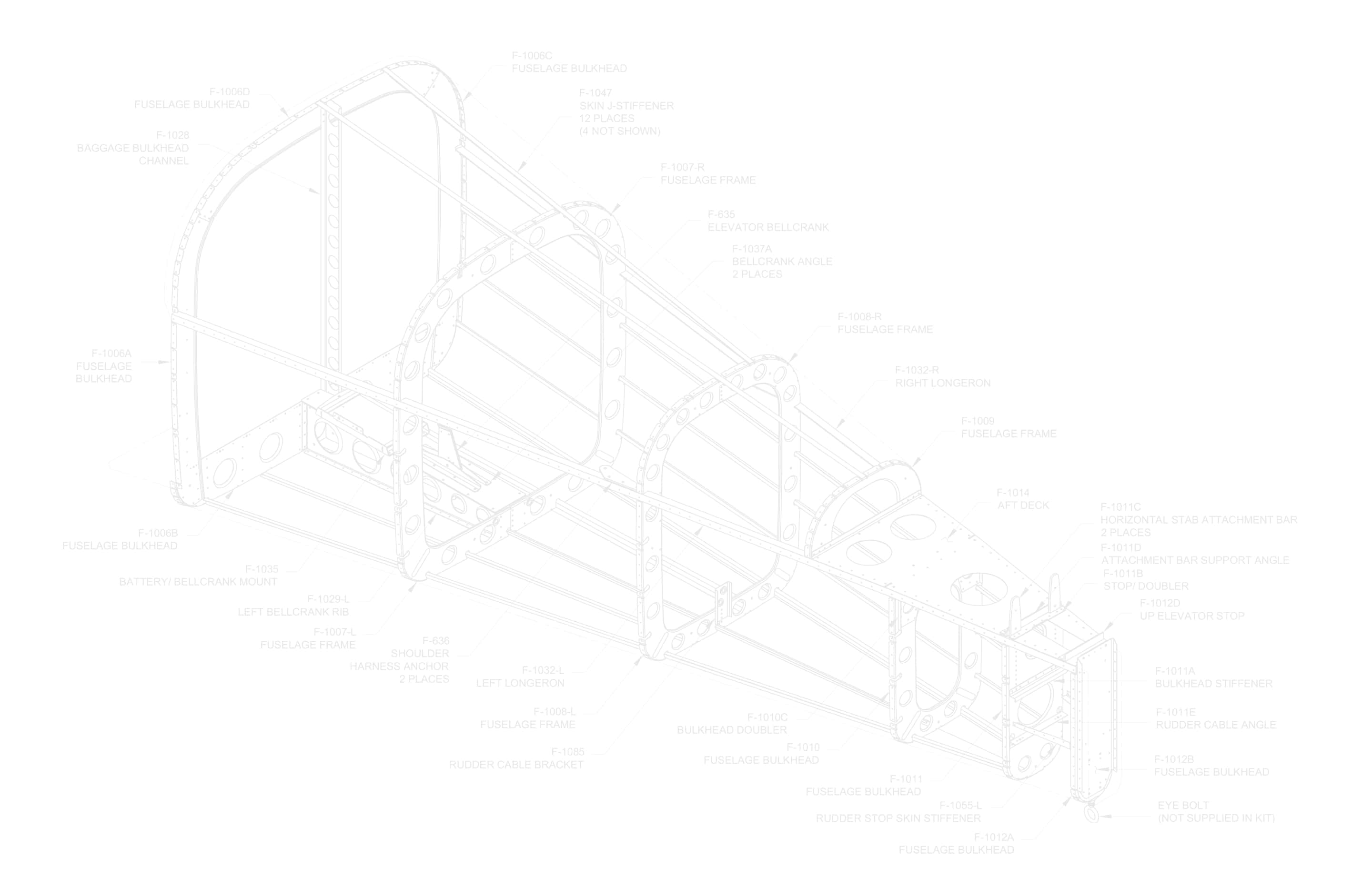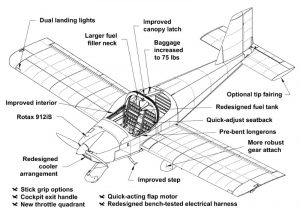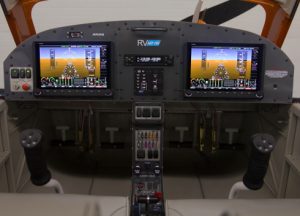RV-12iS
Light Sport.
Total Performance.
- Light Sport Aircraft
- It's light, but it's certainly not boring! Fun, Total Performance and nimble handling -- the RV-12iS is all RV with the special added features and benefits of the light-sport category.
- Build or Buy
- Whether you want to build it yourself (ELSA) or buy it completely finished and ready to fly home (SLSA), we've got you covered!
- Fast Build and Complete Plans
- You can build an RV-12 more quickly than any of our other models, and our plans are detailed, step-by-step and fully-illustrated.
- Flexible Pilot Options
- Whether you're a private or sport pilot, you have options. Flying a Light Sport Aircraft under Sport Pilot privileges lets you operate with a driver's license as your medical certificate in the USA.

Overview
The RV-12iS a two-seat all-metal side-by-side airplane with a large cabin that seats the occupants ahead of the wing spar for maximum room and superb visibility. There are several features that make it a unique RV.
The RV-12iS meets the certification standards of the Light Sport Aircraft category. You can get into the air either in an aircraft built from one of our kits or in a factory-built, ready-to-fly-home model licensed in the Special Light Sport Aircraft (SLSA) category. You can find complete details about our factory-built RV-12iS and RV-12iST trainer SLSA models at http://flyrv12.com.
The RV-12iS wings are quickly and easily removable. Using methods proven over decades in high-performance sailplanes, two people can have the wings off the airplane in less than five minutes, making it easy to transport on a trailer and keep off-airport.
- RV-12iS
 Fuel injected light sport performance, and fun to fly. A truly useful load - especially for a LSA. Build it yourself, or Van's can completely finish it for you, so you can fly it home!
Fuel injected light sport performance, and fun to fly. A truly useful load - especially for a LSA. Build it yourself, or Van's can completely finish it for you, so you can fly it home!
Highlights
Van’s Aircraft strives to continually improve what many consider to be the finest aircraft designs and home-built kits in the industry.
The “original” RV-12 took the Experimental Light Sport Aircraft (ELSA) market by storm in 2008. A few years later we added the Special Light Sport Aircraft (SLSA) option, enabling flight schools and individual owners to purchase completely finished airplanes that they can pick up and fly home from the factory. To date, more than 1,100 kits have been purchased. And there are a lot of RV-12s gracing the skies. More than 600 RV-12s are being flown worldwide by student pilots, sport pilots, private pilots, and more. Impressive is an understatement!
And now you can have the latest model — the RV-12iS
It’s powered by your choice of a modern, fuel-injected Rotax 912 iS Sport or the 912 ULS 100 horsepower engine. These rugged little engines didn’t become the worldwide standard in Light Sport aircraft by accident. Extensive real-world experience has proven it to be durable, reliable, and economical in all sorts of conditions, all over the world. The 912 iS Sport fuel-injected engine is computer controlled for maximum efficiency and delivers greater torque (and even more aircraft performance) than its carburetor-fed brother. A gearbox reduction drive keeps the prop in the most efficient rpm range. Maintenance is available worldwide and it can be powered with either unleaded autogas or 100LL.
The RV-12 is equipped with a ground-adjustable Sensenich composite propeller — light, smooth and affordable. The light empty weight allows a generous and truly useful load — two 185 lb people, a full tank holding 20 gallons of fuel, plus 50 lbs of baggage. And it gets even better when you experience unusually terrific performance at max gross weight. All of this is a rarity in the Light Sport Category, where other aircraft tend to leave their owners wanting for both useful load and performance.
Benefits of Rotax’s 912 iS Sport powerplant
- Improved fuel economy – awesome fuel burn numbers got even better
- Easier installation
- Easier maintenance – no more carburetor balancing, computerized error diagnostics
- More power and torque – results in better climb rate and faster, more efficient cruise speed
- Additional available electrical power allows new lighting and electronics options – good news for flight schools and others who want more capability in their panel
Feature Improvements
But, that’s just the beginning! We listened and learned from RV-12 owners, made many improvements to the airframe and systems based on real-world customer feedback.

- Newly designed cowling that’s easier to remove. Plus, it provides greater cooling on the ground and in climb
- New throttle quadrant design eliminates the need for special carb return springs used on the 912 ULS model engine
- Quick-reacting electric flaps
- New throttle actuation allows the pilot to easily select full-power (rich) or economy (leaned) mode
- Cup holder (Limited to positive G maneuvers)
- Improved canopy latch design
- Quick-adjust seatback feature with an even greater range of adjustability and greatly improved ease of use
- Panel-mounted cockpit handle to aid entrance and exit
- Horizontal stabilator tips are now available as an option
- Dual USB power outlets
- New and improved main landing gear attachment. More rugged and better suited to the training environment — Check out our gear tear-off test video below to see for yourself how and why we designed and tested it
- New transversely mounted fuel tank results in more baggage volume and easier loading
- Same tank capacity of 20 gallons, but much more usable fuel in climb/takeoff attitude
- A larger fuel filler neck is now mounted below the rear window on the co-pilot side — easier to reach less prone to splashing
- Increased baggage capacity to 75 lbs
Fuselage Kit Enhancements and Improvements
- Pre-bent longerons — which any experienced RV-12 builder will tell you, is a pretty great deal
- Redesigned electrical wiring harness is now routed separately from other systems and installed at a later stage of construction, making installation easier
- Wiring harness designed specifically for your choice of EFIS and avionics, with standard accommodations already built-in for options such as lighting, autopilot servos, ADS-B, AP control module, etc.
- Point-to-point wiring eliminates the original RV-12’s control box, which reduces connections and improves audio quality
- Stick grip features buttons that enable trim control, PTT function, AP disconnect, and comm radio frequency swap (“flip-flop”)
Removable Wings
The RV-12iS was designed right from the start to be “trailerable.” Light, easily-removable wings make it practical to keep the airplane at home or keep it in a part of the hangar where nothing else will fit. It takes two people less than five minutes to remove the wings or reinstall them on the airplane a feature that significantly and uniquely defined the RV-12 in its class.
Wing removal and installation is simple: Remove a pair of spar pins located behind the seats, and the wings come off in a few seconds. All control and wiring connections engage automatically, and an ignition interlock prevents the engine from starting if the wings are not properly installed. Installing the wings is simply the reverse of removal, and takes the same amount of time.
Glass Panel
 The RV-12 panel may be configured to the builder’s choice and budget from a selection of available avionics packages, in VFR or IFR-capable configurations. These include the Dynon Skyview HDX touch-screen avionics system and the Garmin G3X Touch avionics system.
The RV-12 panel may be configured to the builder’s choice and budget from a selection of available avionics packages, in VFR or IFR-capable configurations. These include the Dynon Skyview HDX touch-screen avionics system and the Garmin G3X Touch avionics system.
For both manufacturers, VFR panel configurations are available that leverage a GTR-200 radio/intercom (European customers can select the GTR-225 with 8.33kHz frequency spacing), and include a Mode-S/ADS-B-out equipped transponder and 406 MHz ELT. Pre-built switch and fuse panels combined with complete wiring harnesses make the sophisticated panels truly “plug-and-play.”
A map box (available in conjunction with the ULS engine only) can occupy the right-side panel, or that space may be filled with a second EFIS display. Both manufacturers’ avionics systems can control an optional two-axis autopilot and can display ADS-B traffic and weather (USA only). All ADS-B Out systems used in the RV-12iS are 2020-compliant.
Owners who choose the Garmin G3X Touch system may choose to install our RV-12iS IFR avionics suite, which includes dual screens, a GTN 650 navigator, two-axis autopilot, and other necessary components. This configuration enables home-builders to configure their aircraft in the same way Van’s constructs its factory-built RV-12iST technically-advanced trainer SLSA airplanes.
Testing and Certifying the RV-12iS
Extensive, thorough testing of the RV-12 and RV-12iS has demonstrated compliance with LSA performance and structural requirements. This means that the RV-12iS may very well be the best-understood LSA on the market.
As one example, our landing gear structural evaluation tests, shown in the video below, illustrate the level and detail of testing we performed on the aircraft during its development.
Building the Kit – Q&A
One of the most amazing things about the RV-12iS kit is its overall ease of construction. Practically anyone can build it. The plans are step-by-step, quite complete and fully illustrated. Groups of kids around the world build RV-12’s all the time in STEM learning programs, and regardless of skill level, they go together fast relative to most other kits.
The RV-12iS is delivered as six separate sub kits
To be clear, you can order just one sub kit at a time, all of them at once, or any combination of sub kits at any time. Most builders start with the tail kit, then move to the wing, then fuselage and finish kits, powerplant, and then finally the avionics kit (and yes, placing the avionics kit last is a change in the RV-12iS, due to dependencies on completion of items in the earlier kits).
- Tail Kit: Includes all components for empennage surfaces and the fuselage “cone” section- everything aft of the rear baggage bulkhead. This kit is in-common with the original RV-12.
- Wing Kit: Includes all components for wing and flaperons. This kit is in-common with the original RV-12.
- Fuselage Kit: Includes all components for fuselage between the firewall and rear baggage bulkhead. The RV-12iS Fuselage kit is not common to nor are parts interchangeable with the original RV-12 fuselage kit.
- Finish Kit: Includes cowling, engine mount, canopy, wheels/brakes, nose gear components,
and fuel tank components. Again The RV-12iS Finish kit is not interchangeable with the original RV-12 - Powerplant Kit: Includes new Rotax 912 iS Sport engine, the engine installation kit and a Sensenich composite ground adjustable propeller. You may mount the 912 iS Sport or the 912 ULS engine to the RV-12iS firewall. It is not possible to install the 912 iS Sport engine on the original RV-12.
- Avionics Kits: Include complete set of avionics (multiple configurations are available for VFR and IFR configurations), pre-tested fuselage wiring harness, engine and flight instruments, switches, fuses, etc. The kits and wiring harnesses are not interchangeable between the original RV-12 and the RV-12iS, but avionics kits are available for both models.
How long will it take to build an RV-12iS?
We estimate the average builder will spend about 700-900 hours to complete an unpainted RV-12. It’s been done in significantly fewer hours by experienced builders.
How can an RV-12iS be licensed?
The RV-12 was designed to the ASTM standards governing Light Sport Aircraft category and is intended to be licensed in the Light Sport (LSA) category. The airplane is available as a fly away SLSA aircraft or may be built from a kit as an ELSA aircraft.
A design focus of the redesign from RV-12 to RV-12iS was strengthening the aircraft for real-world commercial use in a flight school for training as an SLSA aircraft. We believe the safe handling characteristics, economical operation and maintenance and modern technology make the RV-12iS an attractive asset on any flight line.
Although the ELSA category does not permit builders to alter the design (no unapproved engines, propellers, avionics, etc. are allowed) it does have some attractive features. In the ELSA category, there is no “51%” rule and no restriction on who may assist in building the airplane. This allows any amount of assistance or even a fully professionally-built airplane.
The FAA evaluated the RV-12 kit and found it eligible for registration in the Experimental-Amateur Built (EAB) category. While EAB rules do allow builders to make changes, it is difficult to over-emphasize the difficulties, complications and increased building time that will occur if builders choose to alter any part of the very integrated RV-12 kit. Van’s is not able to provide assistance or advice on any deviations from the supplied parts and assembly instructions.
Can Accessories like Autopilot, Lights or Wheel Fairings be installed?
Of course! Van’s has developed and released several optional packages for the airplane. An RV-12iS equipped with any or all of them is eligible for licensing in the ELSA category:
- A lighting package includes strobes, position lights and landing lights with steady or pulse option
- A two-axis autopilot
- An autopilot control panel with dedicated buttons, independent of the EFIS
- A complete set of wheel fairings that protect the wings and tail while adding a few knots to your top speed
- A complete interior package with carpets, sidewall covers, control stick boots and more — several color combinations are available
What’s the RV-12iS Kit Like?
The RV-12iS is the culmination of forty-four years of experience manufacturing the best aircraft kits available. The result is an exceptionally complete kit with parts that fit very, very well. All metal parts are completely formed and pre-punched with fastener holes. All hardware is included. Every detail of the engine installation, instrument panel, fuel system, landing gear and the airframe is carefully designed and optimized for performance and building ease. No super-special tools are required — forget the jokes, it really does assemble with simple hand tools. The kit assembly instructions (or “plans”) were patterned off the successful package used for the RV-10 and are composed of beautifully clear, computer-generated drawings alongside step-by-step instructions, all on the same page.
What is NOT included in the kit?
Fluids and paint. That’s it!


